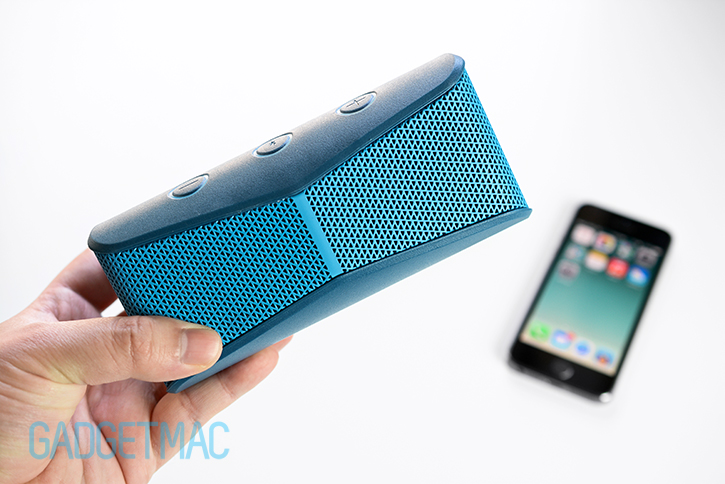Are you searching to acquire a brand new a couple of cordless loudspeakers for your home? You may be dazzled by the number of options you have. In order to make an informed choice, it is best to familiarize yourself with frequent terms. One of these terms is referred to as “signal-to-noise ratio” and is not often understood. I will help explain the meaning of this term. When looking for a pair of wireless loudspeakers, you first are going to check the cost, wattage among other fundamental criteria. On the other hand, after this initial choice, you are going to still have quite a few products to choose from. Now you will concentrate more on a number of of the technical specifications, like signal-to-noise ratio and harmonic distortion. One important criterion of wireless speakers is the signal-to-noise ratio. To put it simply, the signal-to-noise ratio describes how much hum or hiss the loudspeakers will add to the music signal. This ratio is customarily shown in decibel or “db” for short. One way in order to do a simple test of the noise performance of a couple of wireless outdoor speakers shown at this original source is to short circuit the transmitter audio input and then to crank up the wireless speaker to its maximum. Next listen to the loudspeaker. By and large you are going to hear two components. The first is hissing. In addition, you are going to often hear a hum at 50 or 60 Hz. Both of these are components which are produced by the cordless speaker itself. Make certain that the gain of each pair of wireless speakers is pair to the same amount. Otherwise you will not be able to objectively evaluate the amount of hiss between several models. The general rule is: the lower the level of static that you hear the better the noise performance. While taking a look at the wireless loudspeaker specification sheet, you want to look for a couple of wireless speaker with a high signal-to-noise ratio figure which suggests that the wireless loudspeakers output a low amount of noise. One of the reasons why cordless loudspeakers generate noise is the fact that they use elements including transistors as well as resistors which by nature create noise. The overall noise is dependent on how much noise each component produces. However, the location of these elements is also important. Elements that are part of the speaker built-in amp input stage are going to generally contribute the majority of the noise. Noise is also caused by the cordless transmission. Different kinds of transmitters are available that operate at different frequencies. The cheapest type of transmitters makes use of FM transmission and usually transmits at 900 MHz. Other cordless transmitters will interfer with FM type transmitters and create further static. As a result the signal-to-noise ratio of FM style wireless loudspeakers changes depending on the distance of the loudspeakers from the transmitter in addition to the amount of interference. To avoid these problems, modern transmitters employ digital music broadcast and generally broadcast at 2.4 GHz or 5.8 GHz. The signal-to-noise ratio of digital transmitters depends mostly on the kind of analog-to-digital converters and other parts that are used and also the resolution of the wireless protocol. The majority of today’s wireless loudspeakers use power amps which are digital, also called “class-d amps”. Class-D amps use a switching stage which oscillates at a frequency between 300 kHz to 1 MHz. In consequence, the output signal of cordless speaker switching amps have a fairly large level of switching noise. This noise component, however, is generally impossible to hear since it is well above 20 kHz. On the other hand, it can still contribute to loudspeaker distortion. Signal-to-noise ratio is usually only shown within the range of 20 Hz to 20 kHz. Thus, a lowpass filter is used when measuring wireless speaker amplifiers in order to eliminate the switching noise.

The most widespread technique for measuring the signal-to-noise ratio is to set the cordless loudspeaker to a gain which enables the maximum output swing. Subsequently a test tone is input into the transmitter. The frequency of this tone is usually 1 kHz. The amplitude of this signal is 60 dB underneath the full scale signal. Then, the noise floor between 20 Hz and 20 kHz is calculated and the ratio to the full-scale signal calculated. The noise signal at different frequencies is removed through a bandpass filter throughout this measurement. Frequently you will find the term “dBA” or “a-weighted” in your wireless speaker parameter sheet. A weighting is a method of expressing the noise floor in a more subjective way. This method was developed with the knowledge that human hearing perceives noise at different frequencies differently. Human hearing is most perceptive to signals around 1 kHz. However, signals below 50 Hz and higher than 13 kHz are barely heard. The A-weighted signal-to-noise ratio is typically higher than the unweighted ratio and is shown in most cordless loudspeaker spec sheets.





